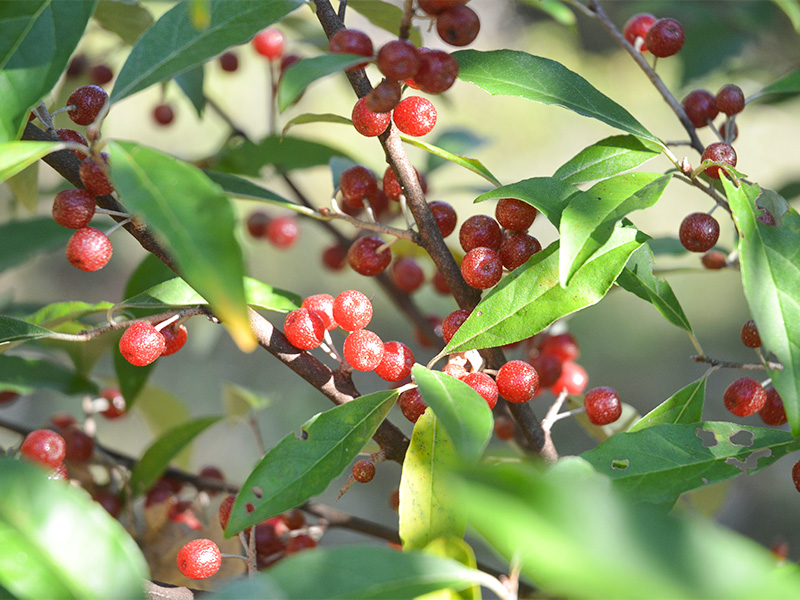
Woody > Elaeagnus > Elaeagnus umbellata > Elaeagnus umbellata
Elaeagnus umbellata
Autumn Olive
Origin: Native to Eastern Asia.
| Family |
| Elaeagnaceae |
| Genus |
| Elaeagnus |
| Species |
| umbellata |
| Category |
| Woody |
| Type |
| Shrub (deciduous) |
| Pronunciation |
| USDA Hardiness Zone |
| 4 - 9 |
| Canadian Hardiness Zone |
| 3 |
| RHS Hardiness Zone |
| H7 |
| Temperature (°C) |
| -34 - (-40) |
| Temperature (°F) |
| -22 - (-40) |
| Height |
| 22 - 45 cm |
| Spread |
| 45 - 76 cm |
Photographs
Description and Growing Information
Flowering Period
| Landscape |
| Hedge and border planting. |
| Cultivation |
| Full sun and partial-shade. Moist and well-drained soils. Drought and erosion tolerant. |
| Shape |
| Large, dense and sprawling. |
| Growth |
| Medium |
| Pests |
| Leaf spots, cankers, rust, verticillium wilt and crown gall. |
| Bark/Stem Description |
| Woody stems/trunks that rise from the base with the largest trunk maturing to 15 cm in diameter. The trunk/branches have sharp thorns. Arching branches that dip to the ground. The bark on older trunks peel in long. thin and narrow strips. |
| Leaf Description |
| Speckled and thorny stems. Elliptic leaves that are 5 - 8 cm long with entire but often wavy margins. Scales appearing on the underside. |
| Flower Description |
| Fragrant, funnel-shaped, 4-petaled flowers. 8 mm long and bloom in clusters (1 - 4 umbels) dropping from the leaf axils. |
| Fruit Description |
| Fleshy, abundant and scale-dotted fruit. |
| Colour Description |
| Stems are silvery-golden-brown in colour. The leaves are a greyish-green with distinct silver scales. The flowers are a silvery-white to dull yellow colour. The fruit ripens to a speckled red colour. |
| Texture Description |
| The leaves appear leathery. |
| Notable Specimens |
| Joany's Woods, West Williams, Middlesex County, Ontario, Canada. |
| Ethnobotanical Uses (Disclaimer) |
| The fruit is edible. Fully ripe fruits are juicy, sweet and tart. May be eaten fresh off the shrub, dried or cooked (pies, jams or preserves). |






